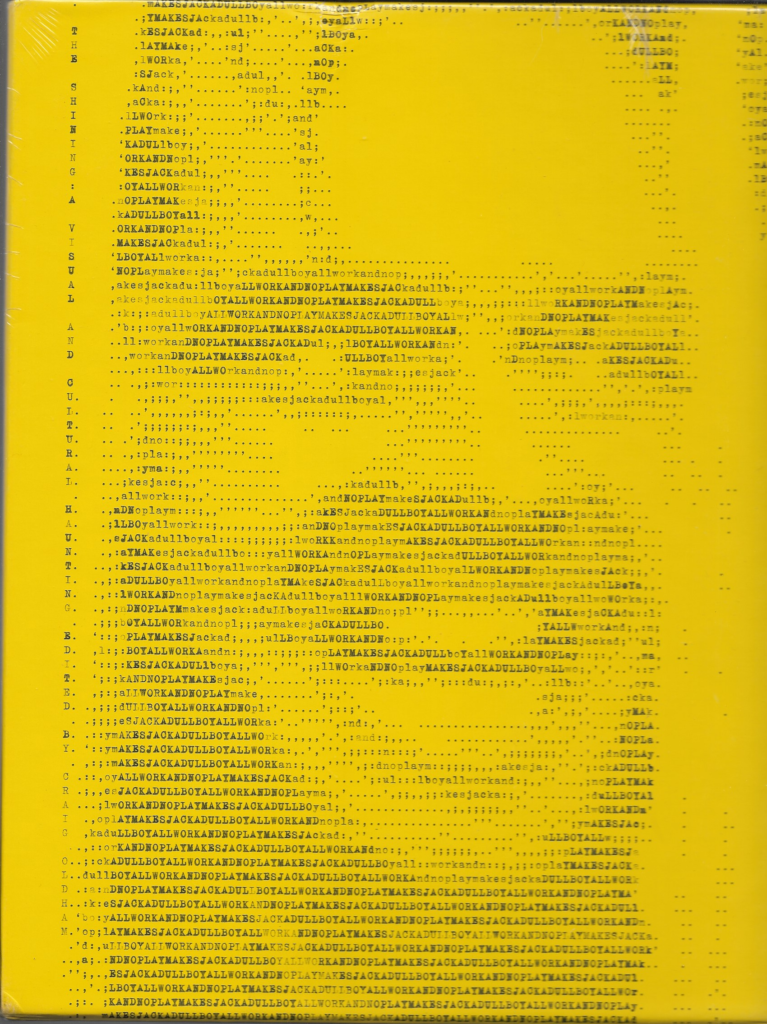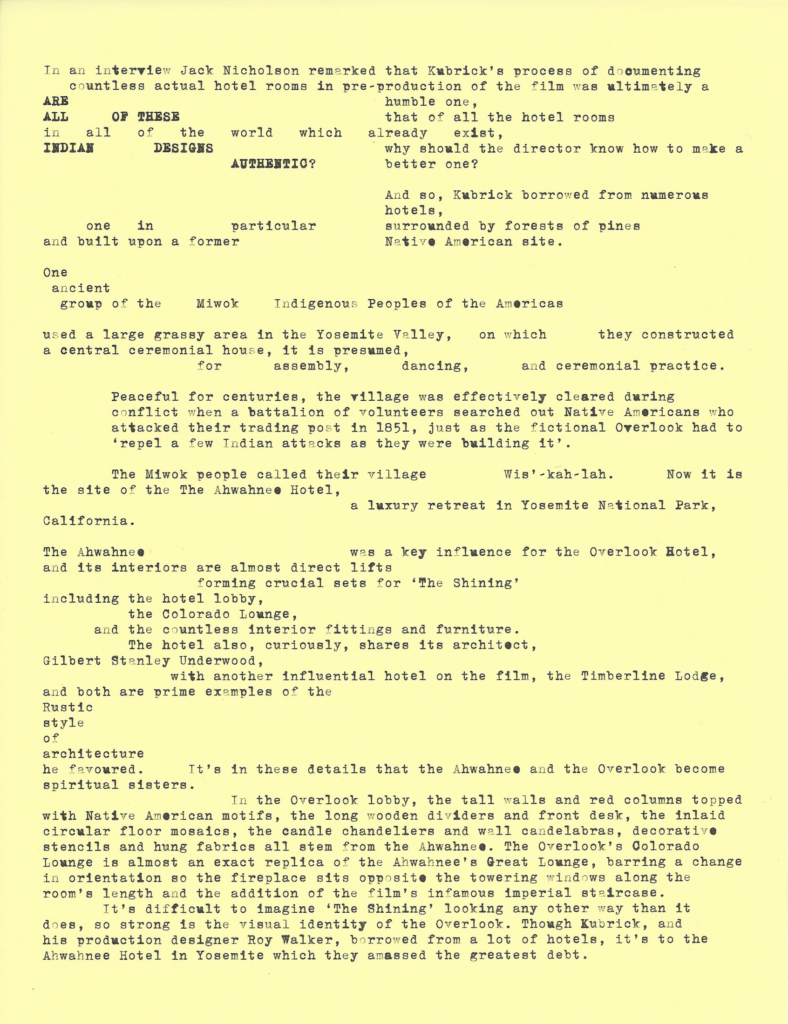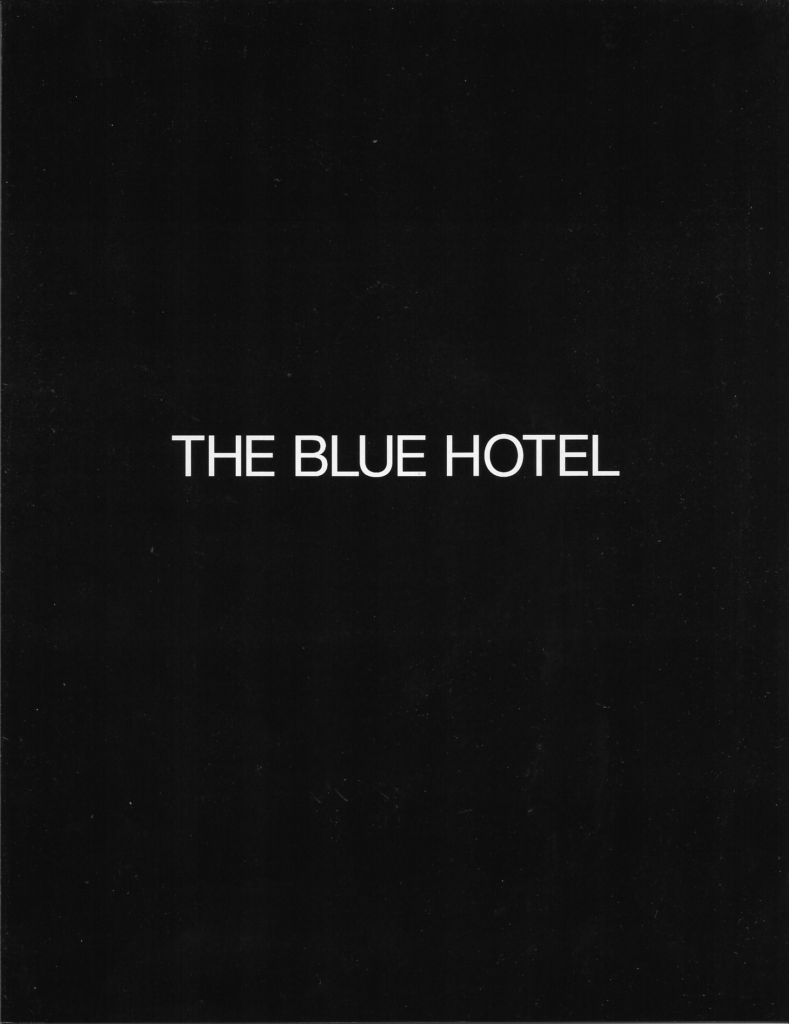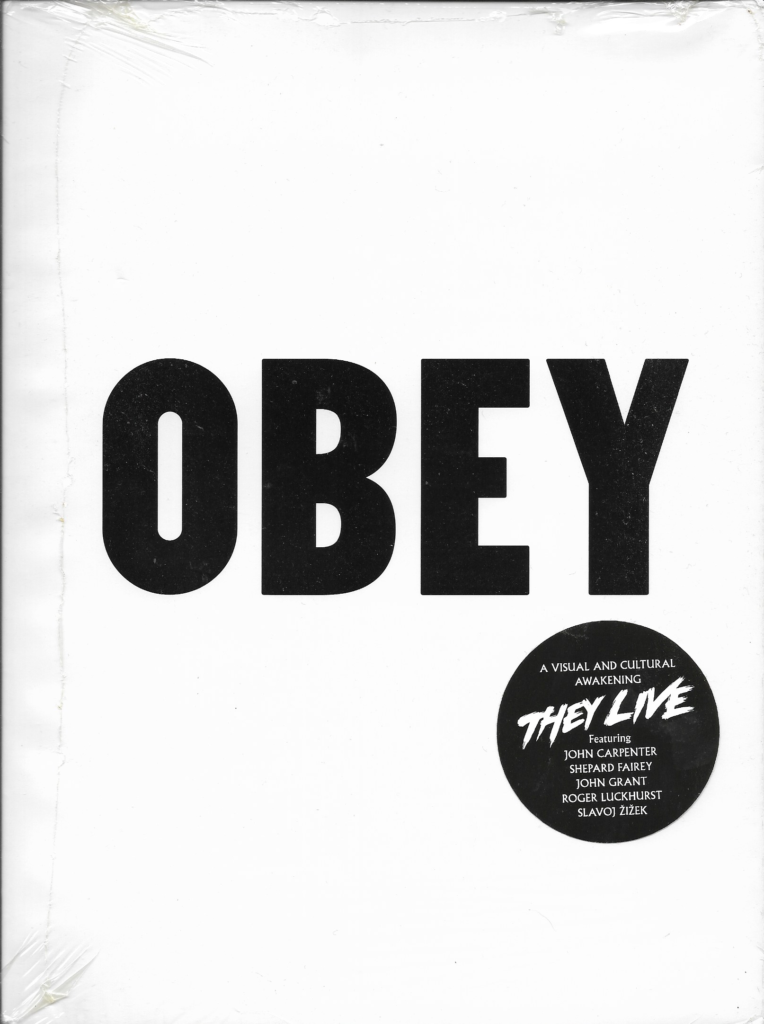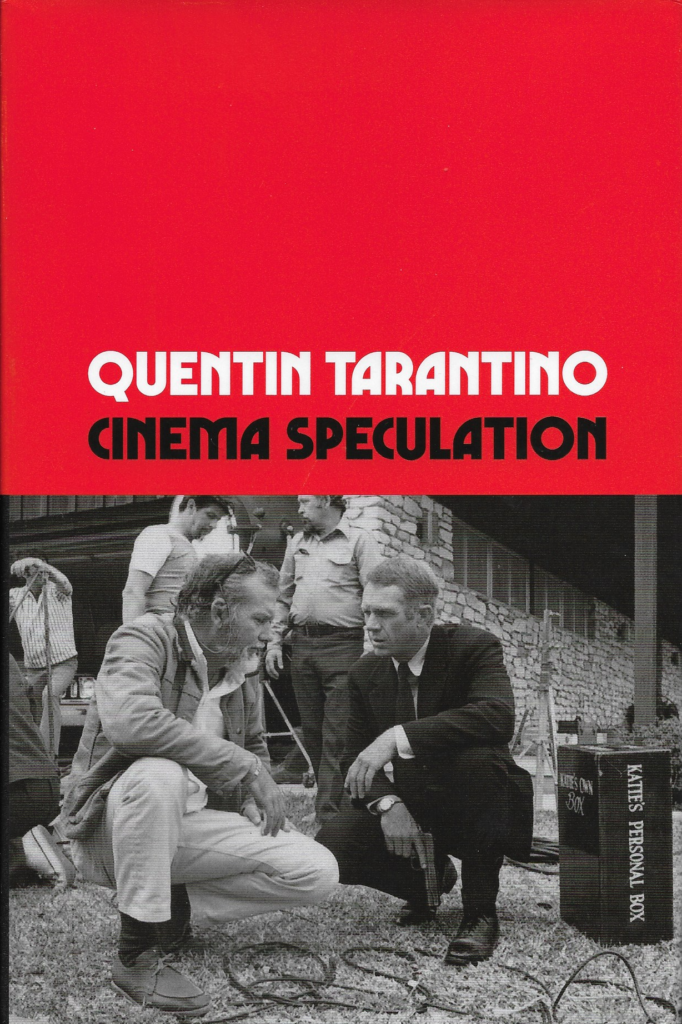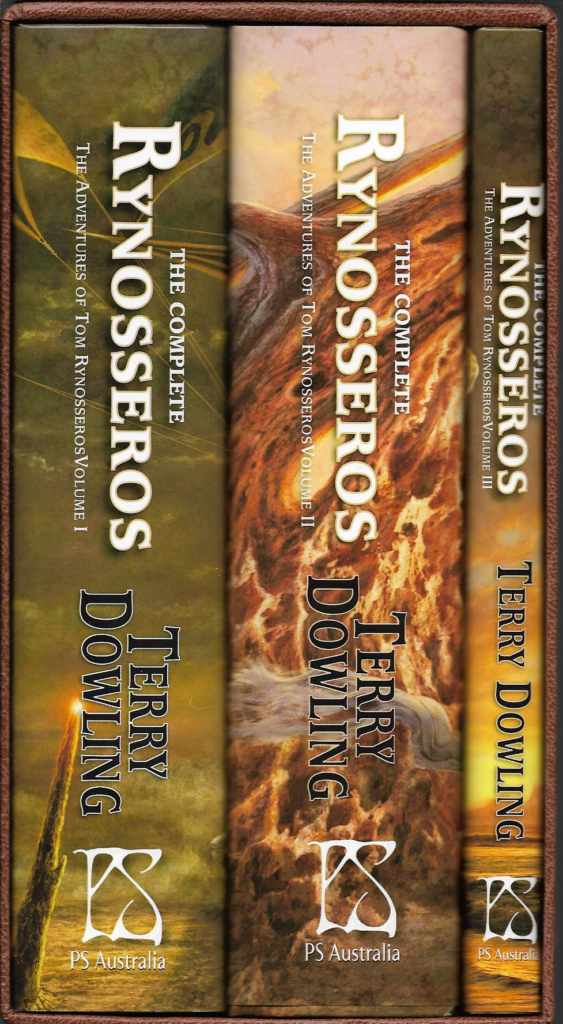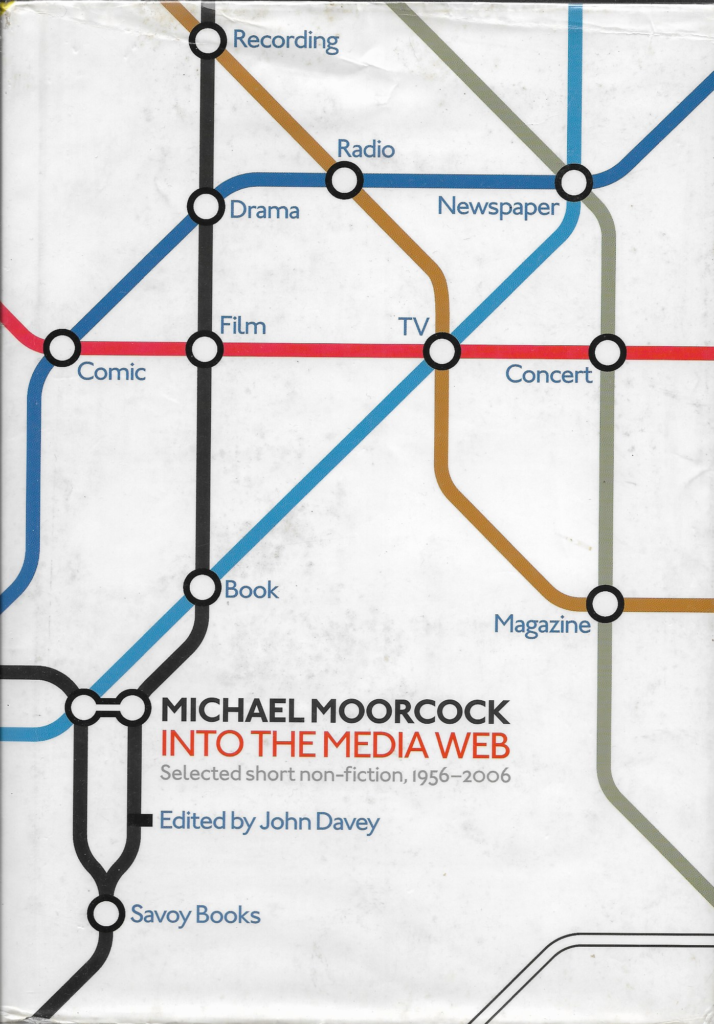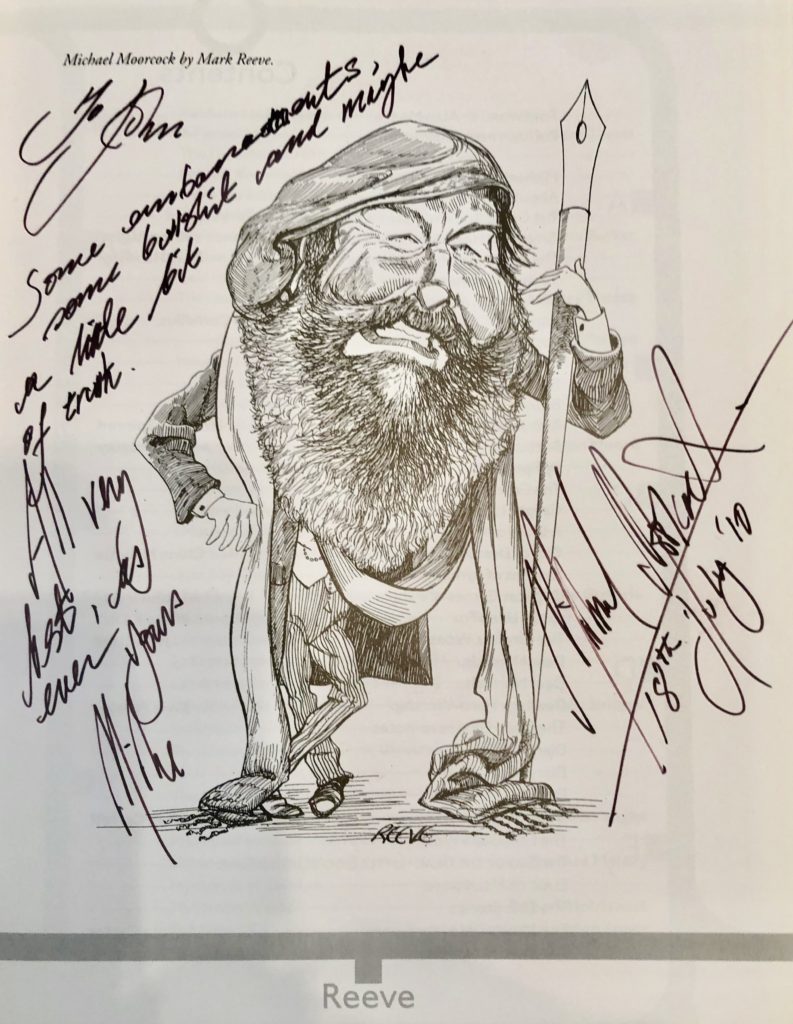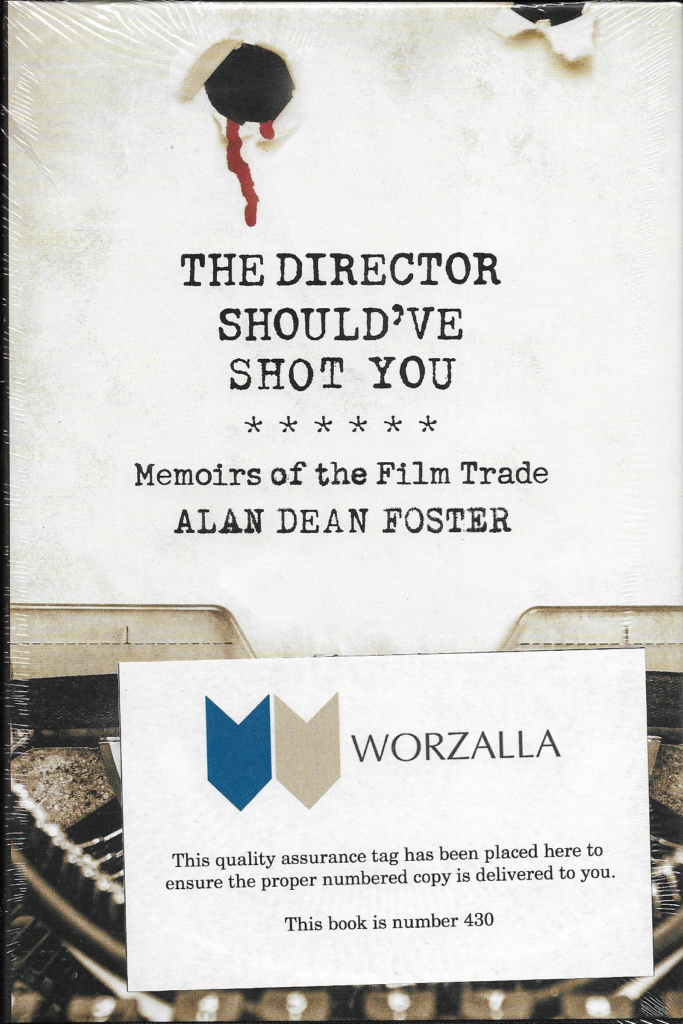This is less a book than a weird art assemblage. Seeing this on Kickstarter, I figured that the overlapping Venn diagrams of crazy Stephen King fans and crazy Stanly Kubrick fans justified a purchase.
The loose sheets:
16 x typed replica sheets with All Work And No Play Makes Jack A Dull Boy as discovered by Wendy in the film. 120 x one-page pieces analysing, exploring, and extrapolating the films ideas, themes, influences, contexts and critiques. 10 x original typewriter art portraits made using the same model of Adler typewriter used by Jack Torrance.
Plus “Contributor Booklets” (which are more like brochures):
9 x 8-page cultural contributor essays from a range of celebrated artists, musicians, authors, architects and curators designed to evoke the film’s intertitle cards.
Original and exclusive piece from actor Dan Lloyd (Danny Torrance), an extraordinarily rare opportunity to share memories, stories and insights from this usually private person, as well as the coup of a rare interview with Shelley Duvall (conducted by Ryan Obermeyer) shedding light on her performance and experience of the film.
Artist Gavin Turk examines myths, mirrors and mazes and looks at the film through art, whilst fashion designer Margaret Howell takes us through her iconic maroon jacket worn by Jack in the closing act of the film.
Artist and musician Cosey Fanni Tutti on sound and the unfolding domestic violence within the film. Architecture expert and writer John Grindrod on the role of The Overlook Hotel itself and the impact of such spaces on our behaviour.
Producer and Record Label head James Lavelle (UNKLE) tells of his enduring inspiration and love for Kubrick and his art whilst author Jen Calleja looks into Shelley Duvall, folklore and fairytales.
And BFI Curator and Author Michael Blyth cross-examines the character of Wendy as she appears in both the film and the original Stephen King novel.
3 x 16 page reproduced texts including essays from H.P. Lovecraft, Sigmund Freud, and a short story which was a key influence for Kubrick when developing the film.
H.P. Lovecraft — Supernatural Horror in Literature An extract from the seminal yet largely overlooked essay that significantly influenced decisions not to explain the horrors which unfold at The Overlook.
Stephen Crane — The Blue Hotel First serialised in 1898, the American author’s story was highlighted by Kubrick in interviews as similar to events unfolding in The Shining and offers an insight into the director’s read of the film.
Sigmund Freud — The Uncanny Diane Johnson (co-writer of The Shining) cited Freud’s influential 1919 essay “The Uncanny” as a key text in Kubrick’s research. Freud explores many ideas that are woven through the film: retracing steps, recurring numbers and motifs, and the significance of the double. We will re-publish an extract from the essay.
with:
Bought for £65 plus shipping through Kickstarter. You can buy them through their respective Amazon links above.
